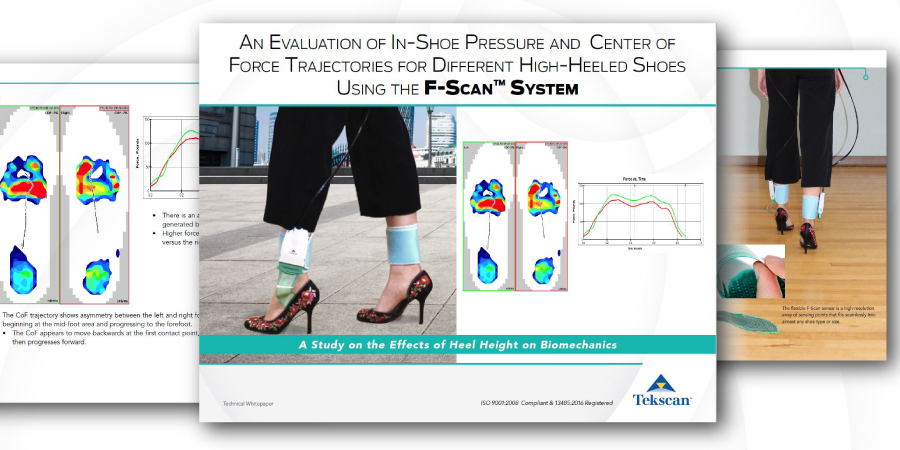
Footwear researchers and designers employ visual observation to identify abnormalities in how an individual walks in their shoe designs. There are important nuances in both in-shoe pressure distribution and center of force (CoF) that may go unnoticed by visual observation alone.
The F-Scan™ in-shoe pressure mapping system utilizes ultra-thin and flexible pressure sensors that conform within a subject’s shoe. This high-resolution pressure-sensing system captures temporal parameters in addition to pressure and force.
The goal for this study was to measure how different high-heeled shoe heights would affect in-shoe pressure distribution, CoF trajectory, total force amplitude, and asymmetries between left and right feet.
The following parameters were evaluated to determine the effects of the footwear on the subject’s gait:
- Plantar Pressure: The distribution of forces over the sole of the foot; in this case, during walking. This can provide indications of foot function.
- CoF Trajectory (CoFT): The direction and behavior of the concentration of force as the subject completes their gait cycle. This parameter is used to identify balance control and foot function.
Click to Download (3MB)
We also have an Evaluation of Shoes Pressure on a Walkway:
An Evaluation of Center of Force Trajectories for Different High-Heeled Shoe Designs Using the Strideway SystemClick to Download (3MB) |
